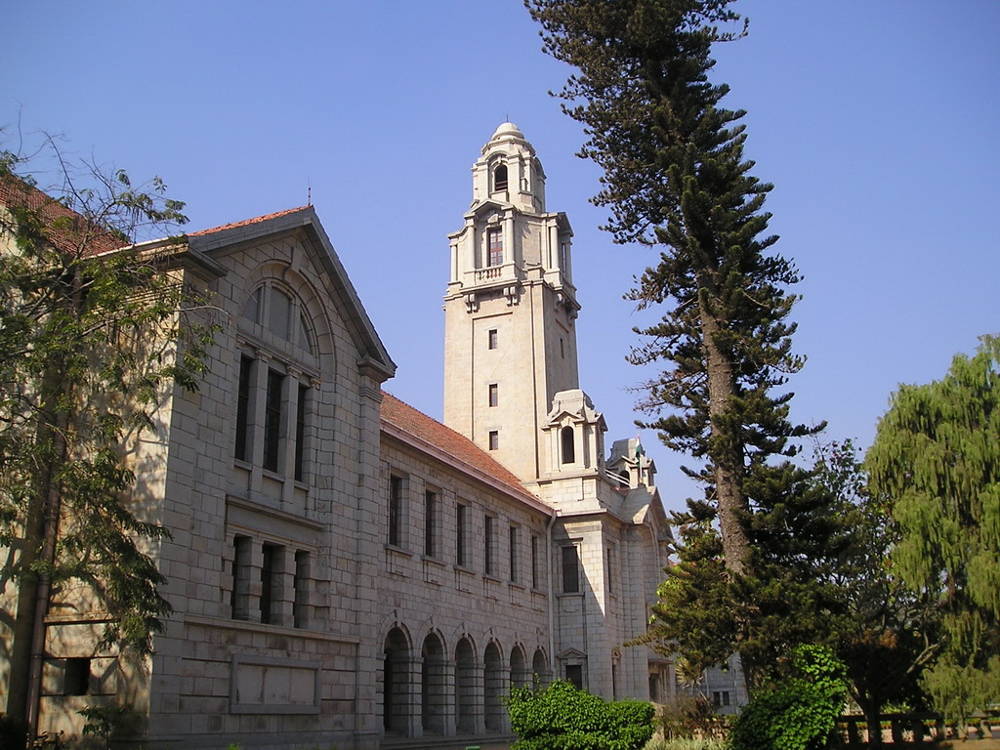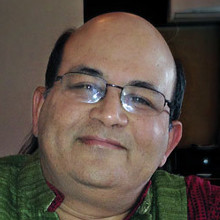[Photograph by Sheeju Chandran (Public domain), via Wikimedia Commons]
In the last 25-30 years, we have seen humongous growth in the private provision of higher education in India. It started in engineering and medicine and then spread to multi-disciplinary and liberal arts universities. While these private institutions have done well on scaling up and spreading across the country, they haven’t done as well in establishing quality benchmarks.
Many education entrepreneurs are aware of this, and when I visit these institutions I am often asked what they could do to become like leading global universities. Some education entrepreneurs with new projects on hand talk about how they want to build these new universities differently so that they can aspire to the world-class tag.
Fortuitously, I recently had the privilege of visiting the Indian Institute of Science (IISc) in Bengaluru to participate in a panel titled “Partnering for the Future”. This gave me an opportunity to learn more about India’s foremost research university.
IISc is the only Indian university to be ranked in the top 200 worldwide. It is the top-ranked Indian university as per the Indian government’s National Institutional Ranking Framework as well. IISc is one bright spot from whom we can hope to learn what it takes to build a world-class university from India.
IISc produces more than 2,000 research papers every year, dominates India’s science and engineering academies in terms of number of fellows, and its professors have gone on to build many of India’s leading institutions. If imitation is the best form of flattery, IISc is clearly an icon—a new set of institutions, the Indian Institutes of Science Education and Research, have been inspired by IISc.
A couple of unique things about IISc that immediately catch one’s eye: in spite of its name, IISc is roughly half science and half engineering, and always has been (its first two departments were chemistry and electrotechnology). It is predominantly postgraduate but has recently started a unique undergraduate programme with a research flavour. About 60% of its 4,000+ students are in PhD programmes.
IISc recently celebrated its centenary. It has excellent lineage—Tata group founder Jamsetji Tata and engineer Bharat Ratna M. Visvesvaraya, were among its early benefactors and supporters. But, what accounts for its success?
It doesn’t seem to be leadership per se. IISc has had many eminent researchers at its helm over the years, but one rarely hears any one leader being acknowledged or spoken about.
Steady support from the government over the years has been a supporting factor. It is evident that IISc has benefited from the Nehruvian paradigm of support for science and technology as much of its core costs are met by the government though the human resource development ministry.
Hire the best people, give them freedom to do their research, create a meritocracy and get out of the way
But, more than anything else it seems to be the old-fashioned, core principles of how to build a great academic institution that have made a difference: hire the best people, give them freedom to do their research, create a meritocracy and get out of the way.
Indian institutions have a tendency to decay over time unlike those in the West which apparently go from strength to strength. IISc seems to have been able to defy this trend due to a strong commitment to these principles.
One criticism which is sometimes levelled against IISc is that it has focused on basic research and not done enough in terms of technology development and industrial applications. While that might have been true earlier, the good news is that things are changing. The Simputer, a handheld device that was ahead of its time and the subject of a fascinating recent article on Founding Fuel, was designed at IISc. Several multinational corporations have sponsored research centres and projects at IISc. The institution has seeded tech companies created by its faculty, the most prominent of which is Strand Life Sciences. We haven’t seen a Google or Facebook emerging from IISc yet, but there’s lots happening there.
There could be a problem with scale though. A few years ago, I read about a professor called Robert Langer at the Massachusetts Institute of Technology (MIT). Work done in his laboratory alone has led to the creation of more than 25 companies, the award of 800 patents, and technology licences to more than 250 companies. In contrast, IISc as an institute has applied for almost 600 patents (and been granted 94) over the past 20 years. Its annual licensing income is only around $100,000. The Langer Lab alone attracts about $10 million in funding every year while IISc’s total external funding for sponsored research was Rs 258 crore in 2015-16.
Another criticism is that IISc has failed to promote interdisciplinary research. That was true in the past, but is beginning to change now with the creation of a Centre for Interdisciplinary Research and a deliberate effort to work across disciplinary boundaries. The Brain Research Centre sponsored by Infosys co-founder Kris Gopalakrishnan is an example of the new direction IISc is taking.
What about the future of institutions like IISc? What do they need to survive and thrive?
The government has been pushing our leading technology institutions like the Indian Institutes of Technology (IITs)—and now, I understand, IISc—to reduce their dependence on government funding and start raising their own resources. Is this a good move?
A similar measure was applied to the Council of Scientific and Industrial Research (CSIR), a network of government-owned laboratories, in the late 1980s. The better performing CSIR labs responded to this pressure by taking on sponsored research programmes for multinational companies and becoming more commercial in their approach to technology development. So, this could be positive for IISc too. But this shouldn’t be taken too far.
IISc can’t depend on government-supported research projects to meet its core costs
If committed state support in the form of a regular grant declines, what are the options? Increasing tuition fee would be important though it would have to be accompanied by a strong scholarship programme either funded by the government or the institute itself. The current structure of government funding for research in India through the Department of Science and Technology (DST), Department of Biotechnology (DBT) or other departmental research support programmes does not fund professor salaries or make a significant contribution to general university overheads. It is not clear whether that will change any time soon. So, IISc can’t depend on government-supported research projects to meet its core costs.
So, it’s evident that research-driven universities like IISc need to build other income streams. The most obvious one is through services provided to industry. Industrial support can come in different forms—continuing education programmes, sponsored academic programmes, sponsored research, design, testing and characterisation services, and royalties for patented products or processes.
To understand the potential of other income-generating activities with industry, it helps to understand the nature of collaboration between industry and academia in India today. Take the case of the automobile industry. In an earlier research project in 2012, titled Innovation in the Indian Automotive Industry: The Role of Academic & Public Research Institutions (published in the Asian Journal of Technology Innovation), I and Srivardhini K. Jha found that in the automobile industry, academic institutions were involved largely in competence creation and training, and testing. The more in-depth collaborative projects of academia and the automotive industry were part of a programme to support such interaction sponsored by the government.
In general, the kind of collaboration depends on the nature of the industry, its maturity and the strategies of firms in the industry. The automotive industry is mature and a large number of consultants are available for product design or even localisation. There are new developments like driver-less cars or new fuels, but most of these are driven by companies in the developed world based on technologies developed there.
There are few industries in which India is at the cutting edge of technology. Therefore the scope for working on cutting-edge R&D projects with local companies is limited except for the case where large multinationals have India development centres. The multinational research centres are themselves going through flux with some of the prominent ones now restructuring to focus on Big Data and analytics.
In short, while it will be good to push institutions like IISc gently in the direction of increasing their external revenues, pushing this too fast or in too great a degree would be counterproductive as it would push the institute away from the core activities it does so well.
A related question is about size. The government is keen to get established institutions to increase their intake so that more students have the opportunity to study at such institutions. Recently, for example, the government suggested to the Indian Institutes of Management (IIMs) that they should plan to double their intake.
Can such a logic be applied to IISc too? I would imagine not, as IISc is predominantly research-focused and increasing student intake would have to be matched by a corresponding increase in faculty strength. Since good faculty are scarce, step jump increases in the number of students may compromise quality.
One area where IISc is at a disadvantage is in terms of hiring the best talent. Universities in the US, for example, are able to attract the best talent from anywhere in the world. Our policies and salary levels prevent IISc from doing the same.
What would it take to build a world-class private university from India? Deep pockets and patience
Which brings us back to the question we asked at the start. What would it take to build a world-class private university from India? At least in theory, private universities would not be constrained by the salary levels fixed by the government and applicable in IISc. So, they can potentially attract the best faculty from anywhere in the world if they provide the right working conditions and overcome the liabilities associated with India’s brand in attracting foreigners to work in India. Deep pockets would thus be an important starting point.
Patience would be a second important pre-requisite. Building a new university to world standards is a long project—it will take a minimum of 20 to 25 years, and could take much longer with no guarantee of success as there is a high degree of path dependence and causal ambiguity embedded in the process of building a great university.
But the biggest challenge for education entrepreneurs will be to support the essential ingredients of excellence without interference—hiring the best people, allowing them to flower and bloom, creating and sustaining academic freedom and meritocracy. By all reports, this will be the most difficult thing for them to do!


